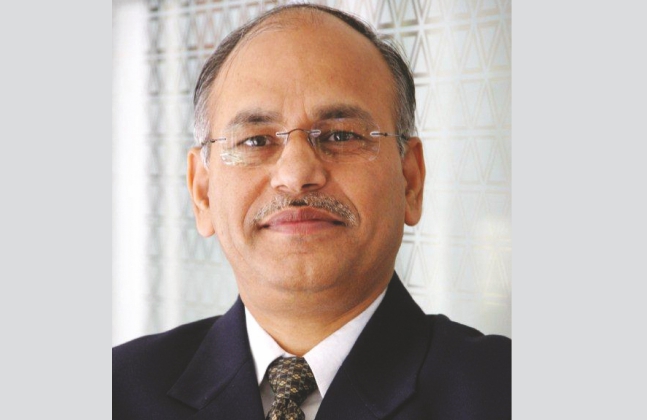[vc_row][vc_column][vc_column_text]
TCIEXPRESS follows the timetested hub & spoke distribution model on which majority of the distribution sector is banking post-GST implementation. An efficient timebased and definite delivery system enables prompt movement of cargo powered by a strong network
Tell us about TCIEXPRESS’s business model, and storage and distribution infrastructure in India? Our business model operates through a ‘hub and spoke model’ across our sorting centers, which are strategically located across the country. Our processes are designed to ensure a systematic and channelized route of goods from the sorting centre to the customer. We have 28 sorting centers across India. At our sorting centers we follow processes which include storage, transportation, sorting and picking. At the storage facility we use semi-automatic handling equipment for efficiency and operations at the facility, and to ensure safety and timely dispatch of goods. Further, we deploy containerized and GPS-enabled vehicles to ensure realtime tracking and safety of the goods. The process is supported by the fleet desk team who constantly monitor the Hub Network Transit Schedule (HNTS) and Delivery Network Transit Schedule (DNTS) for faster delivery routes. We also follow package scanning through barcode technology as well as deploy HPT (Hand Pallet Truck), Pallets and Forklifts which reduce human interface and ensure safer movement of goods and no delays in our warehouses.
Q What is your expectation for growth of cargo distribution and warehousing business in India? Logistics market is expected to grow at a CAGR of 14.59 per cent in the next five years. India’s express Industry has reached a market size of `20,346 crore by 2015. We anticipate a lot of momentum and growth in the market, especially with the expected implementation of the nationwide uniform GST. There will be demand for increased space for sorting centers/warehouses and set up for larger spaces. This is likely to invite investments and better inventory control via better technology application.
Q What are the unique operational methodologies that the company has leveraged to grow in India? The key market drivers that we have adopted over a period of time in this sector are time-definite deliveries and strong network. TCIEXPRESS is well equipped to offer time-definite solutions to 670 out of 675 districts in India with its wide spectrum of services comprising surface, domestic and international air, e-commerce, priority and reverse express services. Following well-connected routes for prompt movement of cargo through a hub & spoke distribution model allows for an efficient time based and definite delivery system. We service over 40,000 locations, out of our 550 owned offices to provide last-mile delivery.
Q What will be the strategy for the post-GST market conditions?
Under the GST regime, the interstate movement of goods will be subject to Integrated Goods Service Tax, wherein all movements will be ‘tax paid’. Additionally, the Goods Service Tax Network will have an audit trail of the movement of goods across the state boundaries. Our primary strategy will be to address the immediate need of the industry post the bill implementation and adapt to technology processes to adhere to new tax credit system. Other strategies such as aligning of transit routes, exploring 3PL opportunities, increasing capacity for sorting centers will all be under consideration once the bill is fully implemented.
Q What is your observation about evolution in e-commerce logistics and distribution in India? How would the segment evolve in the future?
The future of the express delivery business will stride on the growth of the e-commerce sector. There will be an upsurge in the demand of timedefinite delivery and the future will be positive for the express business. The sector is also moving towards digitisation and this acceptance is pushing the unorganized players to adapt to the newer business models. But we as an organised entity have always been in sync with the changing technology to ensure innovative solutions for the customers. Therefore, the penetration in the e-commerce sector will pave the road for a bright and active future for express logistics where the market requirements will be met at express timelines.
[/vc_column_text][/vc_column][/vc_row]






